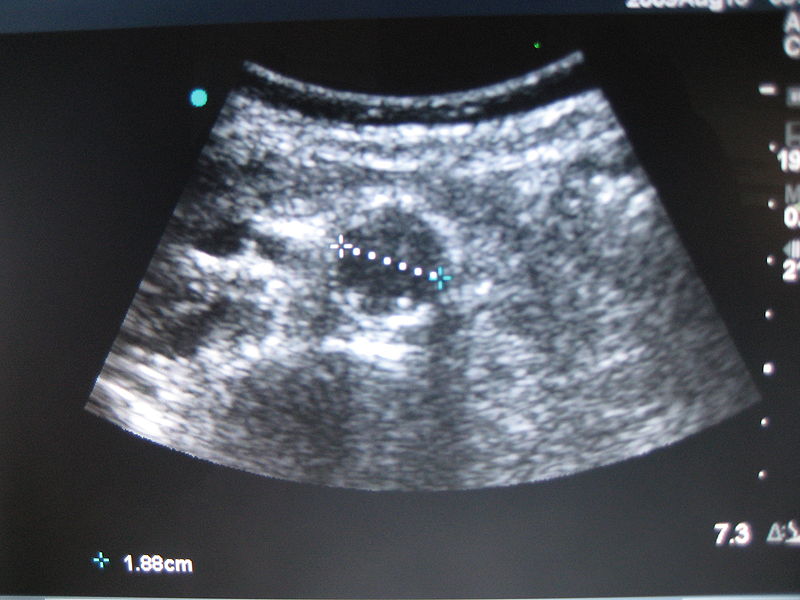Abdominal aortic aneurysm abdominal ultrasound
|
Abdominal Aortic Aneurysm Microchapters |
|
Differentiating Abdominal Aortic Aneurysm from other Diseases |
|---|
|
Diagnosis |
|
Treatment |
|
Case Studies |
|
Abdominal aortic aneurysm abdominal ultrasound On the Web |
|
Directions to Hospitals Treating Abdominal aortic aneurysm abdominal ultrasound |
|
Risk calculators and risk factors for Abdominal aortic aneurysm abdominal ultrasound |
Editor-In-Chief: C. Michael Gibson, M.S., M.D. [1]; Associate Editor-In-Chief: Cafer Zorkun, M.D., Ph.D. [2]; Hardik Patel, M.D.
Overview
Abdominal ultrasound is the standard imaging modality used to detect and follow the progression of an abdominal aortic aneurysm (AAA). When performed by an expert, it has a sensitivity and specificity close to 100% and 96%, respectively, in the detection of an AAA. Abdominal ultrasound can also detect mural thrombus, iliac artery aneurysms, and free peritoneal blood.
Ultrasound
Abdominal ultrasound is the standard imaging modality to detect and follow the progression of an abdominal aortic aneurysm. When performed by an expert, it has a sensitivity and specificity close to 100% and 96%, respectively, in the detection of an AAA. Abdominal ultrasound can also detect mural thrombus, iliac artery aneurysms, and free peritoneal blood. Abdominal ultrasound is noninvasive, fast, inexpensive, safe, well-tolerated by most patients, and can be immediately performed at the bedside if an AAA is suspected. Screening using ultrasonography causes no serious side effects. Screening can be used to determine the size of the aneurysm and to observe the aneurysm over time. The ability to screen the abdominal aorta, however, is reduced by the presence of bowel gas or obesity.
Shown below is an ultrasound image of a normal abdominal aorta measuring 1.9 cm in diameter:
Copyleft image obtained courtesy of http://en.wikipedia.org/wiki/File:US_normal_abdominal_aorta.JPG; James Heilman, MD.
References
